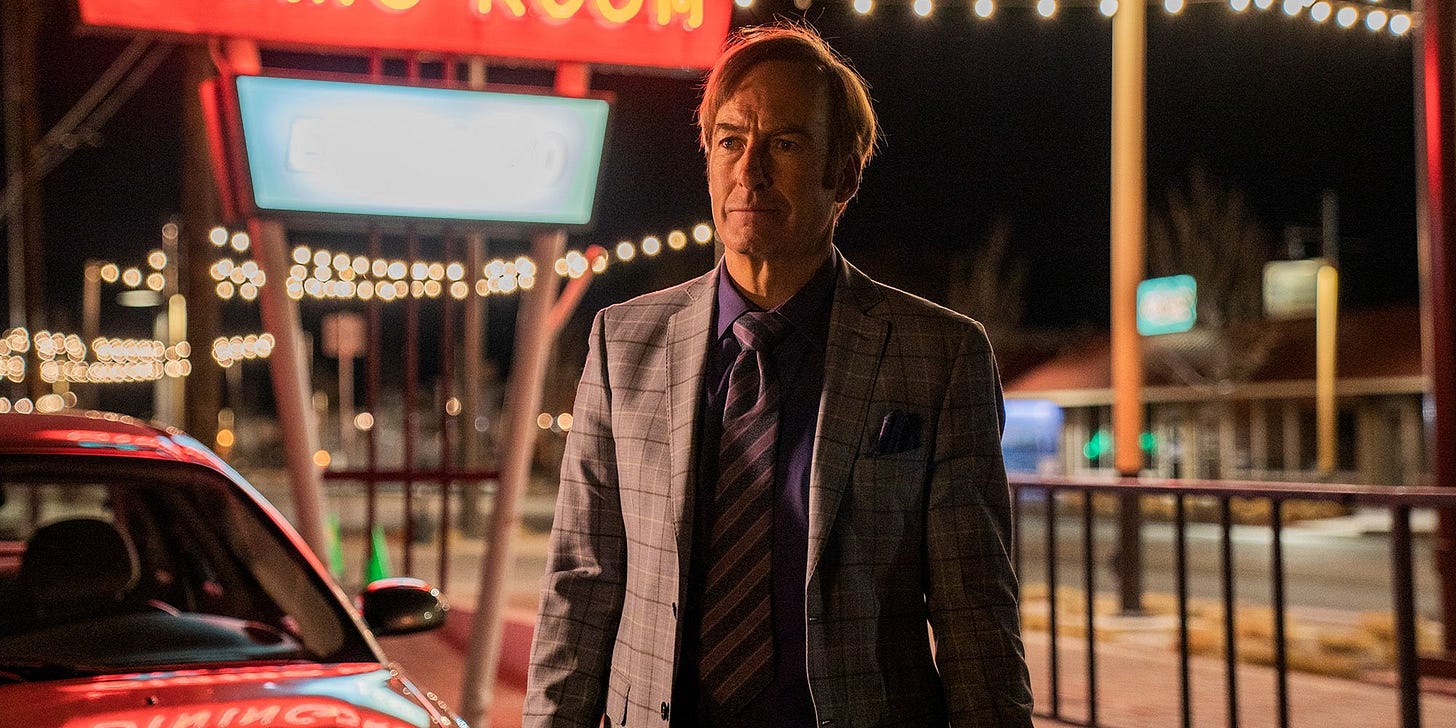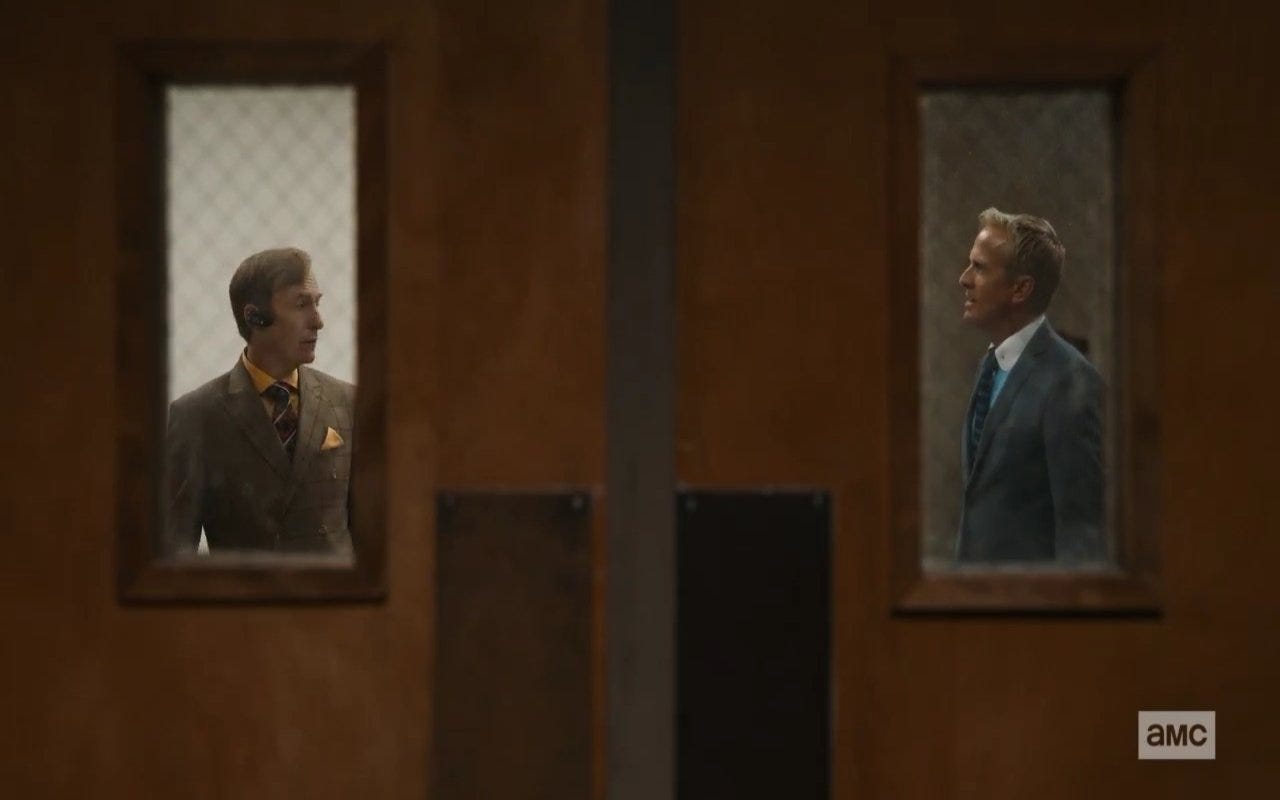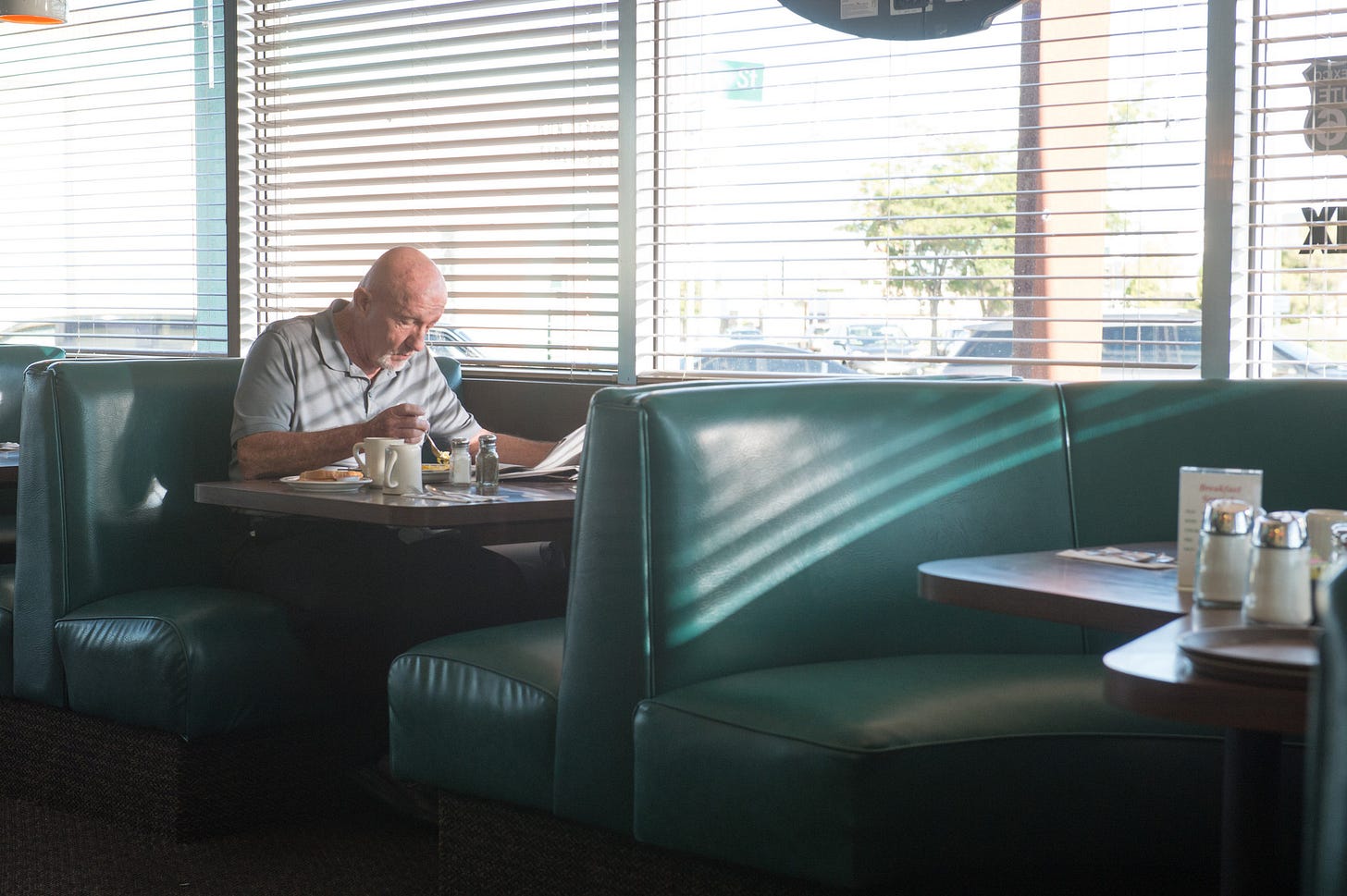Human Lens #40: What I'll Miss Most About Better Call Saul
The cinematographer that graced our televisions for 6 seasons
No, this is not a review for the last season of Better Call Saul. Some who are currently keeping up with the show may find it odd that I’m writing about it a little less than halfway through its final season. In watching this final arc of series creators’ Vince Gilligan and Peter Gould’s New Mexico Drug Saga (or probably more commonly known as the Breaking Bad Saga) I’ve been reminded of the intricacies all departments within the production take heart in. While I’m going to praise all of them here, I’ve come to notice one name that always stands out in the credits when it comes to the overall look of Better Call Saul, Marshall Adams.

The director of photography wasn’t indoctrinated into this AMC juggernaut until the premiere episode of the final season of Breaking Bad. Despite it being his lone credit on the hit series, his work granted him the lead gig when the prequel series came around, as well as the sequel film that released on Netflix.

Marshall Adams’ style is annunciated by the work done before him in Breaking Bad, but he takes it to another level. Along with the help of the set designers, props department, and even excellent location scouting, Adams places the viewer into tangible positions, utilizing the everyday beauty of real world objects and lighting to create an overall look that is unique from anything else on television.

There’s an emotional weight behind every single shot in episodes that he works on, which is provided by an expertise in lighting. Shots that are lit with just a lamp on a side table, or the streetlights leaking through a window, bring back memories like laying in bed at night when you can’t sleep. Shots of sunlight leaking through curtains and windows give off a warmth that isn’t recognized as relatable unless you break thing down the way that I do. And then of course there’s the cold filler of LED light that cloaks office spaces and hallways. The work of a master artist is when their shots are invisible to the general viewer. The way these shots are lit gives off a relatable emotion and connection to places and scenarios that we’ve all been in.
When you master the minute details of what will draw a viewer in, you allow yourself room as an artist to get creative, even though all the unwritten rules tell you not to overdue it. Creative shots like a close up that’s framed off the reflection on a filled coffee cup surprisingly doesn’t take the viewer out of the narrative. Reflections specifically are a consistent theme throughout the series, so there’s an argument to be mad that they don’t fit the definition of creative. Either way, there are certain shots that can distract from a conversation that characters are having, or detract from important elements within a scene, but Marshall Adams trust in his editors to worry about that when constructing a scene later, and boy do they make him look good.

As this series come to a close, instead of being sad that this wonderful work is coming to and end, I’m going to look back the way I am here and appreciate the high quality everyone was able to produce for more than a decade. I look forward to what this team of creatives will do next, hoping that Marshall Adams will be involved to some extent.



